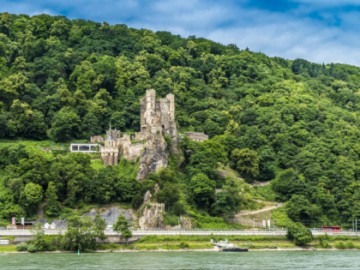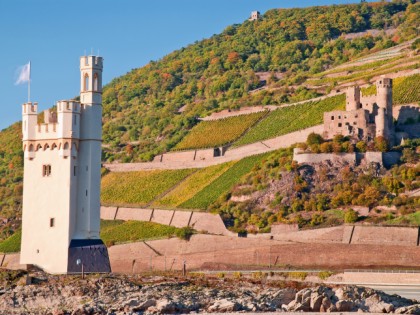Mouse Tower in Bingen – Revenge over the Archbishop
The Mouse Towerin Bingen am Rhein is one of the oldest buildings on the territory ofFranconia. The watchtower on the island of Rhine was built by the Romans in thefirst century AD. That building did not survive. Later, Archbishop of Mainz,Gatton II, (Hatto II) restored the tower as part of the system of patrol buildingson the Rhine. Gatton levied merciless taxes from ships running on the Rhine, forwhich reason archers were always placed on the tower constructed by them. Theywere always ready to open fire on the ships refusing to hit the beach and pay thetax. In 1689 the Mouse Tower was destroyed by the French, but in 1855 the authoritiesof Prussia restored it. Since then, the tower’s appearance has not changed.
local legend is connected with the Mouse Tower. Theabove-mentioned Archbishop Gatton II was known as a very cruel and greedy man.In 974, the district was struck by a terrible famine. But Gatton only boostedprices on the grain stocks he had at the church. When the starving were readyto raise a rebellion, the bishop used a trick. He invited the hungry people inthe granary warehouse, and promised to give food and grain. When they came, heordered to lock the warehouse and set fire to it. Hearing the cries of people burningalive, Gatton said: "Hear the mice squeak!"
But this is not the end of the story. Once Gattonarrived at his castle, he was immediately attacked by mice. The bishop,thinking that the mice cannot swim, attempted to hide from them in thewatchtower on one of the islands of the Rhine. But the rodents overcame thewater barrier, caught Gatton and ate him alive. Since then the tower has beencalled Mouse Tower. Historians, however, have questioned even not the legenditself (it's all clear), but the origin of the tower’s name. According to them,it was originally called not Mäuseturm, but Mautturm, ie Customs. And it isfully consistent with its purpose. Much later people renamed it a Mouse Tower.






































